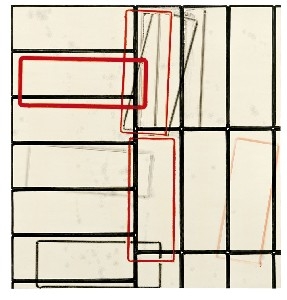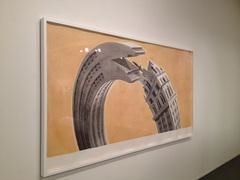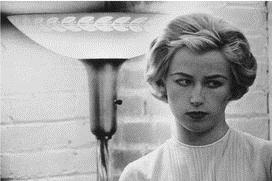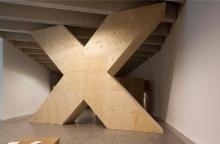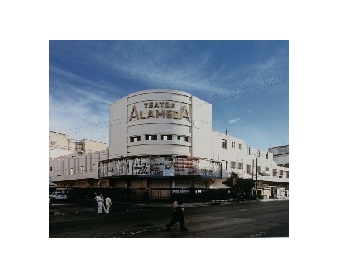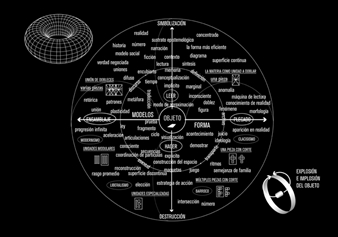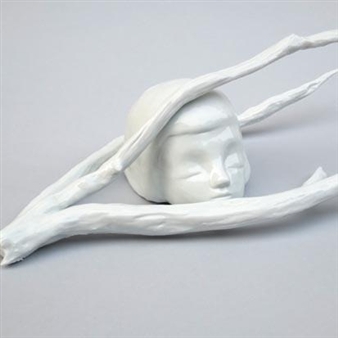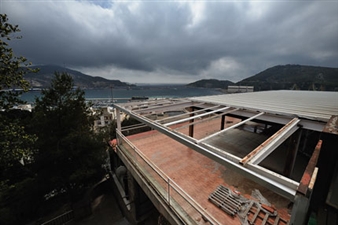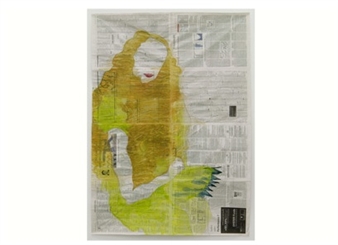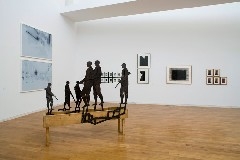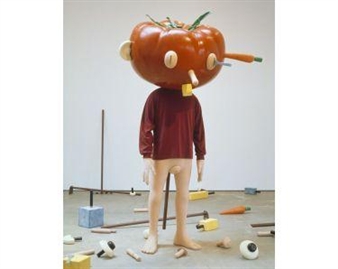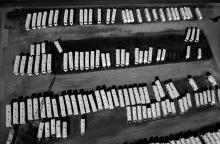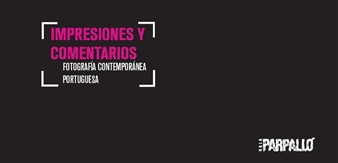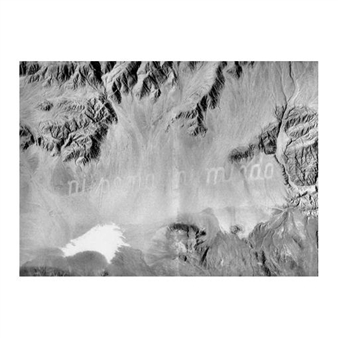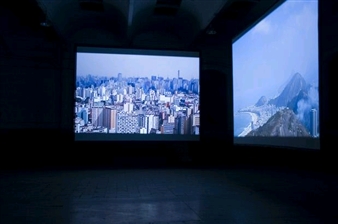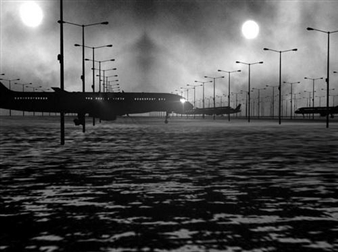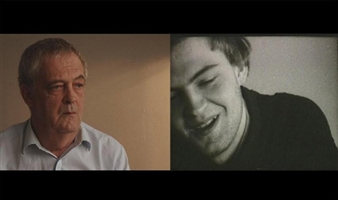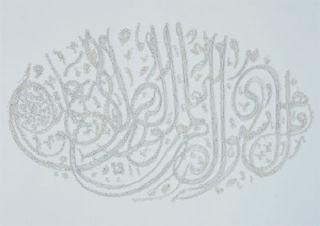Un No Por Respuesta (No For An Answer)
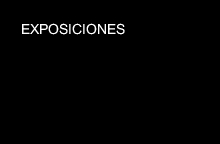
Museo de Arte Contemporaneo de Castilla y León, Castilla y Leon, León, 04/02/2009 - 06/21/2009
Avenida de los Reyes Leoneses 24
Laboratorio 987 reflects on the concept of "NO" with the colective project Un NO por respuesta (NO for an answer) Title: Un NO por respuesta Artists: Javier Arce, Menchina Ayuso, Josechu Dávila, Antonio de la Rosa, Joan Morey, Tere Recarens, Riiko Sakkinen, Miguel Ángel Tornero, Un Mundo Feliz & the action Dibujos Curativos (Healing Drawings) by Aitor Saraiba. Curator: Tania Pardo Coordination: Luisa Fraile Venue: Laboratorio 987, MUSAC Dates: April 2nd – June 21st, 2009 Under the title Un NO por respuesta (NO for an answer), on April 2nd, 2009 MUSAC’s Laboratorio 987 will unveil a group show revolving around the idea of “NO” in its many aspects, from refusal as a political stance to the concept of “No” related to disappointment and failure. Un NO por respuesta will include contributions from artists such as Javier Arce, Menchina Ayuso, Josechu Dávila, Antonio de la Rosa, Joan Morey, Tere Recarens, Riiko Sakkinen, Miguel Ángel Tornero, Un Mundo Feliz and the action Dibujos Curativos by Aitor Saraiba. Un NO por respuesta is Laboratorio 987’s first collective exhibition structured around a concept, an innovation in this independent art space’s program with, which has, since its opening in April 05, taken on board experimental proposals with the aim of providing artists with lesser visibility a point of entry into the commercial art circuit. The forthcoming exhibition project No for an answer shall be divided into three phases. The first comprises the design and publication of ten posters approaching the idea of “No”, each designed by one of the nine artists invited to take part in the show. In the the second phase of the project, an open conversation with the artists around the concept of “No” will take place at the museum every two Thursdays. Last but not least, to close the project, Aitor Saraiba will perform his action Dibujos Curativos (Healing darawings) with the collaboration of the public. Un NO por respuesta: the exhibition The exhibition Un no por respuesta will be structured around the nine posters designed by the artists invited to the project. These nine designs will be available for visitors to take home, leaving it up to them to choose which of them they want to keep or “Not”. This phase of the exhibition will be rounded off with a reading desk where visitors will find material on “NO” as a concept selcted by the artists; as well as bibliography on the nine participating artists and a large cork board where they will be free to contribute their own ideas on “NO”. Un NO por respuesta: Conversations with the artists In the second phase of Un NO por respuesta, every second Thursday during the exhibition period, starting April 2nd, the participating artists will share with the public their experiences with “NO” in their artistic practice. Calendar of conversations with artists • Thursday, April 2nd, 8.00 p.m Josechu Davila Antonio de la Rosa Riiko Sakkinen • Thursday, April 23rd, 8.00 p.m Menchina Ayuso Miguel Ángel Tornero Un Mundo Feliz • Thursday, May 14th, 8.00 p.m Joan Morey Tere Recarens Dibujos Curativos, (Healing Darwings) by Aitor Saraiba On Thursday, May 28th, from 7 p.m to 10 p.m, the artist Aitor Saraiba will perform his action Dibujos Curativos (Healing Drawings), in which the public will tell him about their own personal experiences with the “no” and he will “answer” with drawings which will try to “heal” these experiences. Biographical notes of participating artists Javier Arce (Bajo Maliaño, Santander, 1973) Arce’s pieces, predominantly in sculpture, are defined by an organic and minimalistic treatment of his materials. His work has recently evolved towards a more complex formal approach, combining the use of additional media such as drawing, photography, installation and video. Arce questions art’s idea of Utopia as a unique, personal and independent experience, reflecting upon the use of artworks as commodities in today’s society. Thus, the artist adopts a clear-cut critical approach to the distance created between content and concept, sarcastically underlining the gap that modernity opened up between the artisanal object and the art object. Menchina Ayuso (Madrid, 1972) Menchina Ayuso’s work is based on relationships between subjects and their closest environment; i.e., the relationships established by the artist with the places she spends most of her time in, including home and work. Thus, Ayuso’s videos and photographs display everyday and domestic environments where certain characters interact, reflecting upon the relationships between individuals and their everyday activities. Josechu Dávila (Madrid, 1966) Dávila produces work with a clear conceptual slant. His work reappraises the art world’s usual strategies, ranging from the relevance of the object as a work of art, to certain forms of “the artist’s” behaviour. His scathingly ironic work involves the viewer in many of his actions, designed to destabilise the system’s strategies. Antonio de la Rosa (Zaragoza, 1968) Antonio de la Rosa’s work focuses mainly on actions and performances, delving into social limits and in particular everything that exists on the border between what is lawful and unlawful, moral and immoral, etc. He applies a healthy dose of intelligent irony in his approach to certain forms of social behaviour, including sex, drugs or attitudes towards childhood; decontextualising them in order to involve the viewer and alter the established norm in given situations. Joan Morey (Mallorca, 1972) Lives and works in Barcelon. Graduate in Arts by the University of Barcelona. Among his recent artistic projects projects are: «OBEY, humillados & ofendidos», «POSTMORTEM (Projet en Sept Tableaux), «Pour en finir avec le jugement de dieu», «EL MAL EJEMPLO o el Enemigo Interior», DOMINION & NUEVA OLA or Desencert. He has been part of numerous group shows in Museums and Art Centres in Germany, Italy, Spain, Australia...He has experienced teaching and collaborated in editorial projects, workshops, seminars…He has also given lectures on the language versatility of his work or the “contamination” that occurs between different creative media, with the intention of clarifying some what makes art a “product” attached to the speed of present times. Tere Recarens (Girona, 1967) Video, photography, drawing and installation are some of the media used by Tere Racarens in order to construct her peculiar and humorous universe of images and experiences. Leaping around, baring her underwear or getting drenched in the middle of the street are just a few of the actions she regularly documents by way of a visual diary that she gradually compiles in the various cities where she has lived over the past few years. Her actions present the everyday from the perspective of someone who makes every detail, every single moment special, approached with fine irony and transgression. Through what appears trivial, Tere Recarens subverts many of the roles that govern our everyday existence, proclaiming art’s power as a vehicle for understanding and altering our lives. Riiko Sakkinen (Helsinki, 1976) This artist’s work, whether it be in the medium of painting, on paper or installation, offers an analysis of today’s society and the icons related to the world of advertising, culture and politics. His works are loaded with critique and irony, not only in the depicted motif, but also through the insertion of phrases that serve to decontextualise the image’s meaning. His work’s aesthetics hark back Raymond Pettibon, Chris Johanson or Martin Kippenberger. Miguel Ángel Tornero (Jaén, 1978) This photographer’s work reveals a highly personal universe, often based on a study of the human form in specific landscapes, thus providing an analysis of different aspects of identity. With outstanding technical finesse, he stages his pictures in highly cinematic contexts in order to imbue the works wit peculiar auras. In fact, his work is ultimately a play on the controversy between photography’s alleged veracity and his scenes’ staged fiction. Un Mundo Feliz This group of Madrid-based designers headed by Sonia Díaz and Gabriel Martínez (Armellada, León, 1967), produce a protest-related form of graphic design, exemplified by their book Pictopía (published by Promopress), which offers over 400 open-access pictograms and illustrations and 200 film clips on an attached CD. Their graphic messages express their approach to issues such as violence, racism, gay rights, Guantanamo detainees or terrorism. “One of the key ideas we work with is the permanent reinvention or reuse of images and messages in new contexts”.
For More Information
